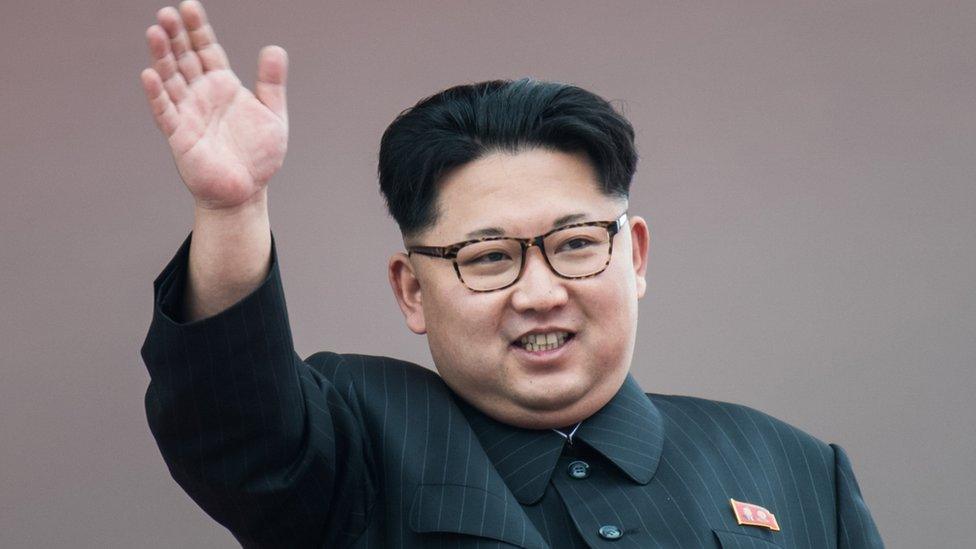What the new photos of North Korea's leaders say
- Published
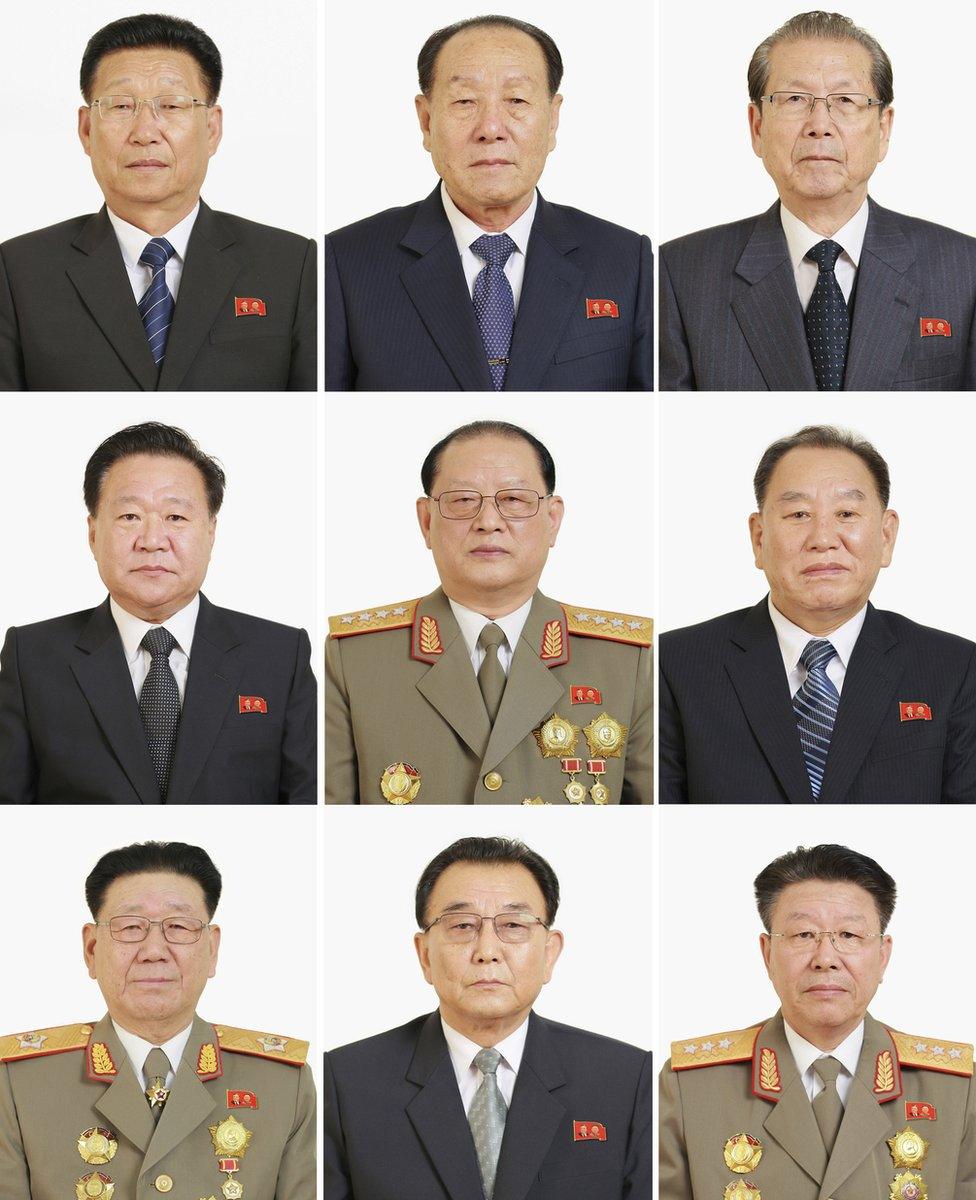
North Korea has released a new set of photos of Kim Jong-un and party and military leaders.
The BBC spoke to US-based North Korea expert Michael Madden about what the pictures tell us, after the recent and rare party congress.
That retouching debate
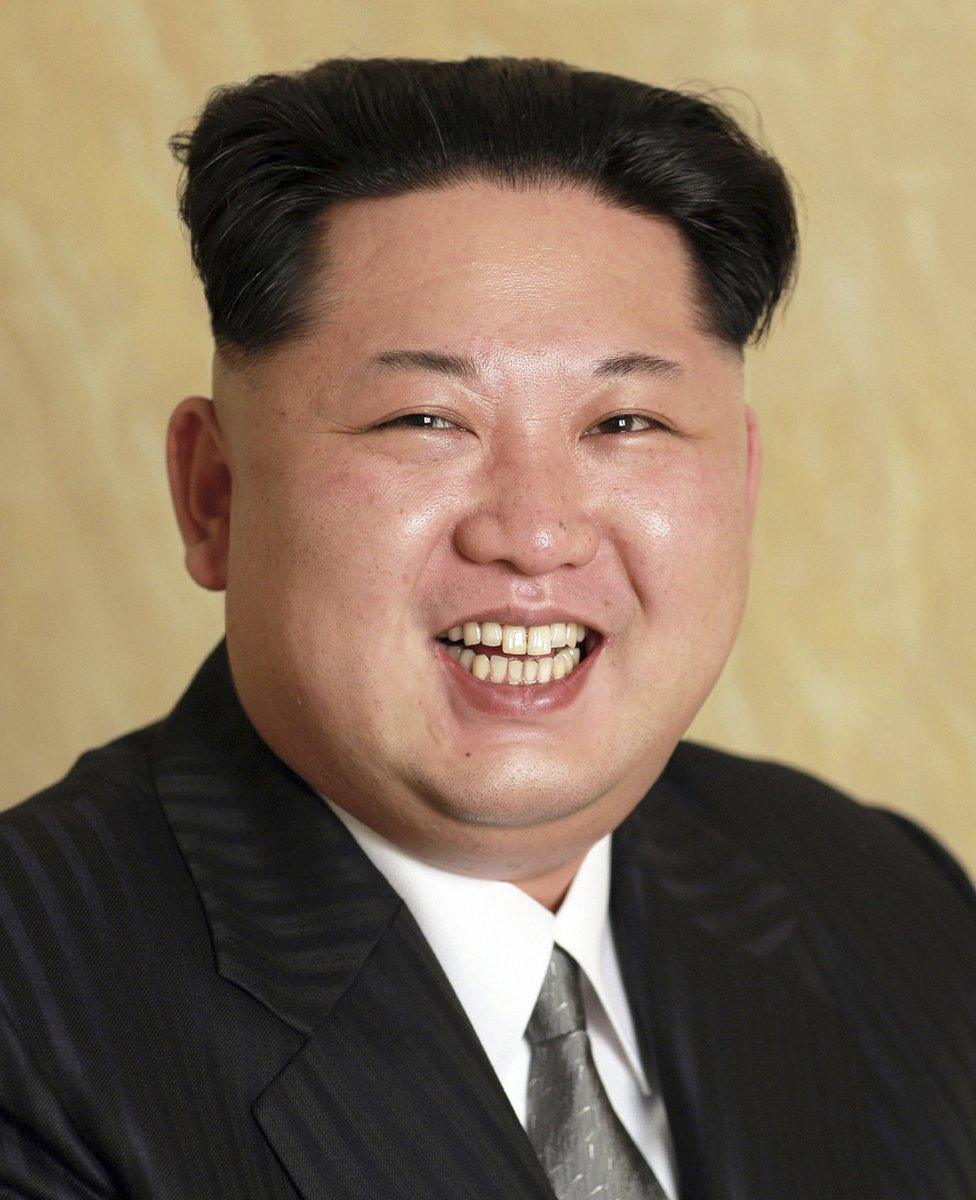
"Kim Jong-un is putting himself on the cover of the party newspaper, warts and all," says Mr Madden, of the photo of the leader.
But he says media reports that this is the first time North Korea has released unedited images of its leaders are "nonsense".
For example, a group of photos released in 2009 showed some senior officials with dilated pupils, as if they had been drinking.
Where are the women?
There are none in the released images. The highest position held by women at the moment in North Korea is party department director or vice-director.
Mr Kim's sister Kim Yo-jong, for example, is vice-director of the propaganda department.
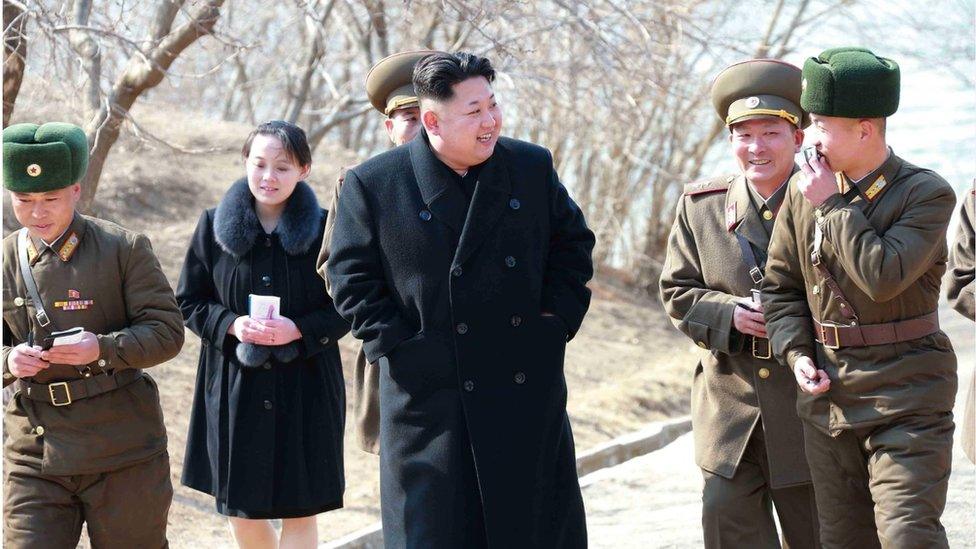
Yo-jong was seen in the background in this March 2015 picture of her brother touring a military unit
"Realistically, women - as department directors and deputy directors - have more power than some of the vice-chairmen, because they handle the day-to-day running of the departments. They are Kim's eyes and ears in the political system," says Mr Madden.
It's also believed to be the women who handle the wealth of the Kim family.
"North Korea is a patriarchal culture, but in a totalitarian system, being able to wield power as gatekeepers or financial functionaries is more powerful than sitting on a political bureau, you have realistic powers day-to-day."
But, says Mr Madden, women made up 10% of the delegates at the party congress - not a huge number but a significant advance on the last congress in 1980.
The millennial general?
Other than its youthful head, North Korea's leadership is notable for its age. Many officials are in their 80s.
An exception is No Kwan-chol, a three-star general and member of the political bureau at the age of 35.
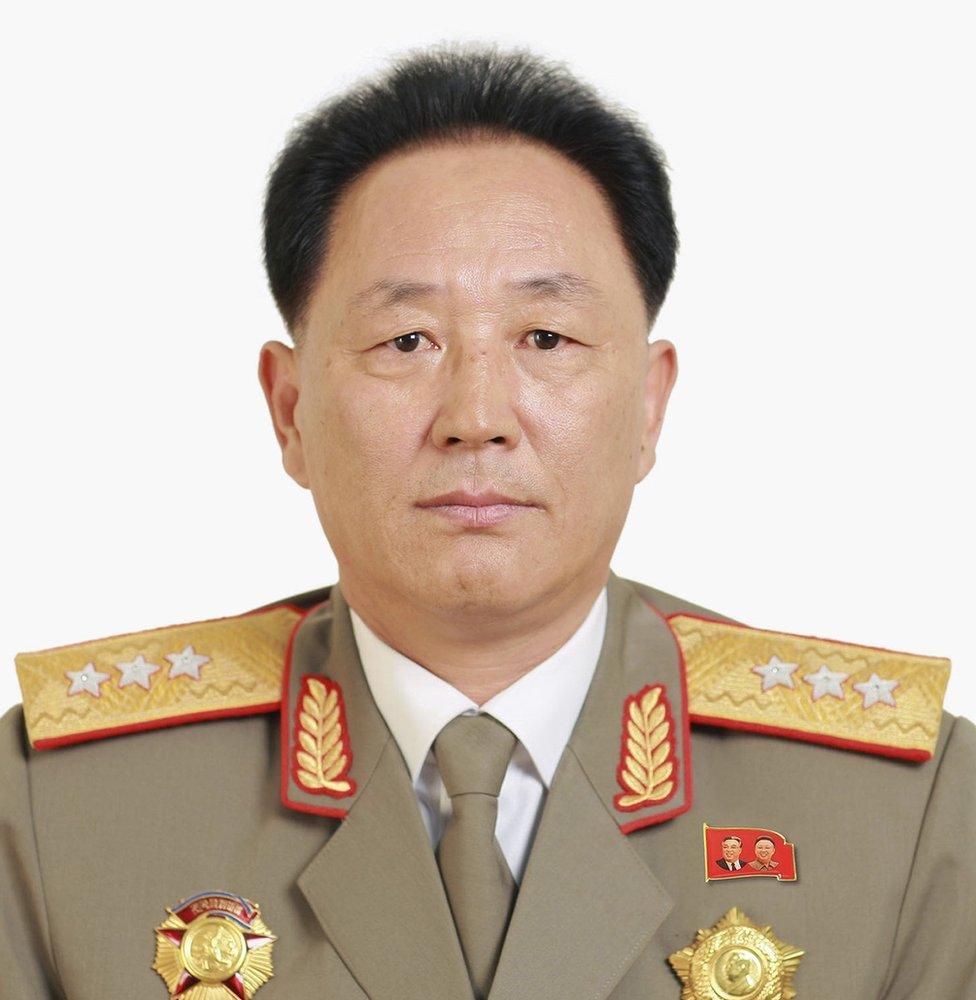
This is believed to be an image of the young general No Kwan-chol
Not much is known about him, but he rose to prominence under Mr Kim.
There are a few of these "millennials" coming up through the lower ranks of the party and military and poised for future power, says Mr Madden.
The 'resurrected' general
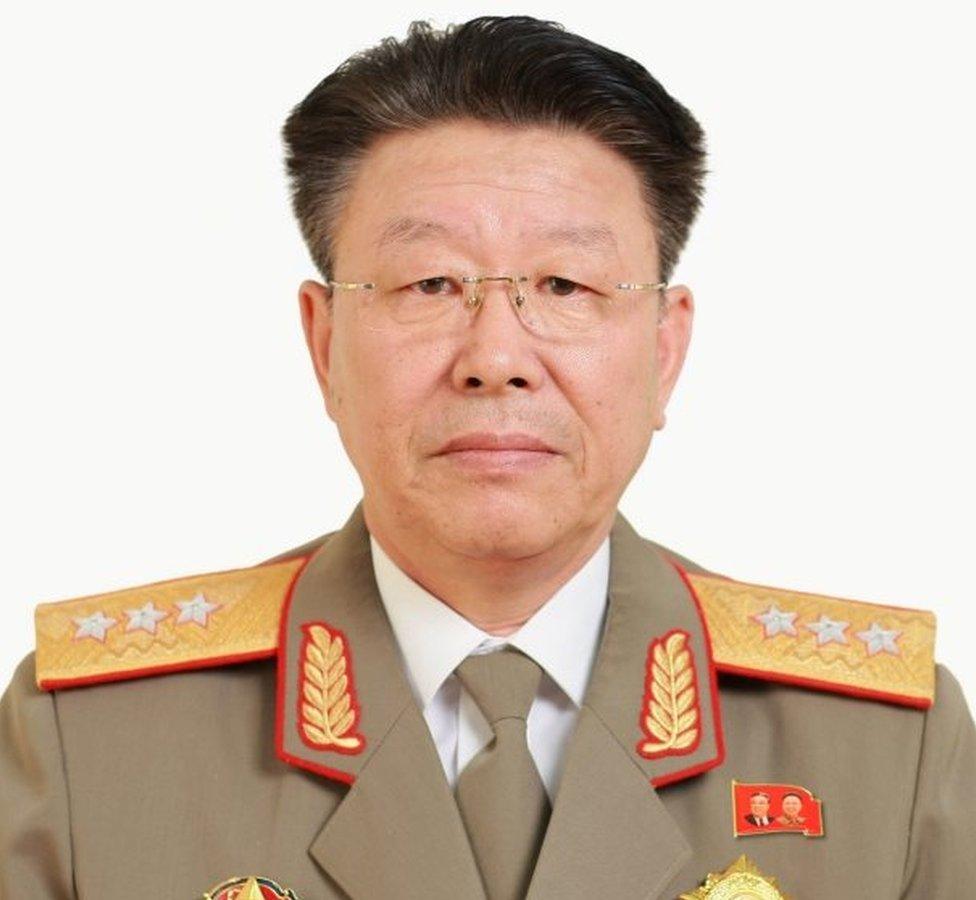
Ri Yong-gil has had a demotion but is still alive, contrary to earlier reports
This is Ri Yong-gil, a three-star general and a member of the political bureau. Last February, he was widely reported as being dead. South Korean sources said he had been executed for "conspiracy".
"We have to take rumours about dead North Korean officials with pinch of salt," says Mr Madden. It's not hard for poorly sourced information to be aired.
"Some of these officials who disappear from state media are sent away for a few months for re-education, what we might call corporate training. Sometimes they are destined for high office, or a new job."
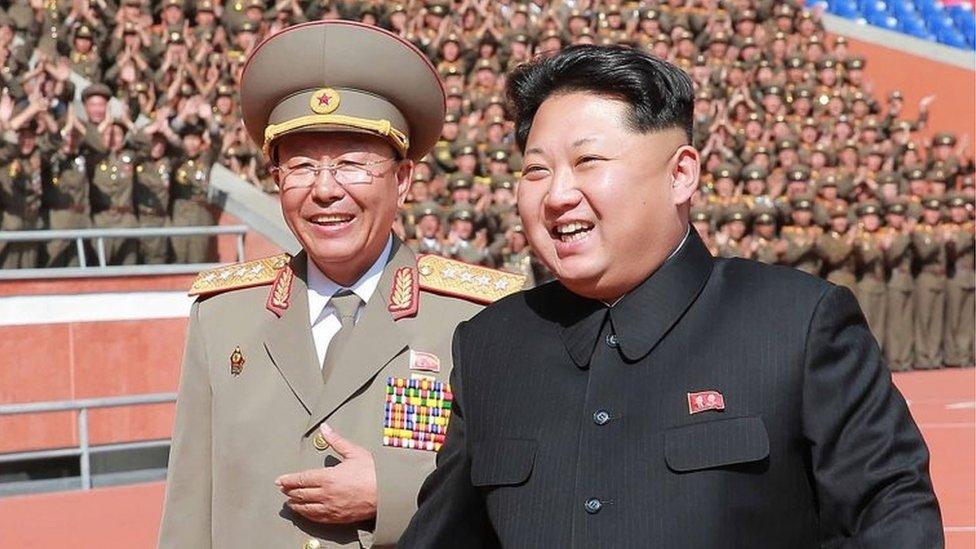
South Korean media attributed news on the execution of Gen Ri to unnamed sources
Given the timing of his disappearance from the public eye, he says - during a period of particularly high tensions at the border with the South - he had likely been sent away to deal with the issue.
He has, however, been demoted from his four-star general post, for unclear reasons, and his new job wasn't listed. "This demotion by epaulette" is standard practice under the leader and Gen Ri might yet see his star restored.
The message? Party over army
The photos - and state media's reporting of them - have to be seen in the context of a party congress which reset North Korea's political system, says Mr Madden.
In a change from his father's time, Mr Kim is asserting the dominance of the party over the military. He has "concentrated a lot of political power in the hands of six or seven officials". In all state media reporting the party officials appear before military officials.

Pak Pong-ju is one of the officials still pictured visiting factories
Many of them have been given two or even three titles. This is a sign that there is a specific power cohort and they are going to have a lot more power than they did before the congress.
Though it might appear superficial and cosmetic to observers, "in North Korea, the form and the content are inseparable".
So who are the pictures for?
Primarily North Koreans, so they know that "if this guy shows up where you work you might want to pay attention to him".
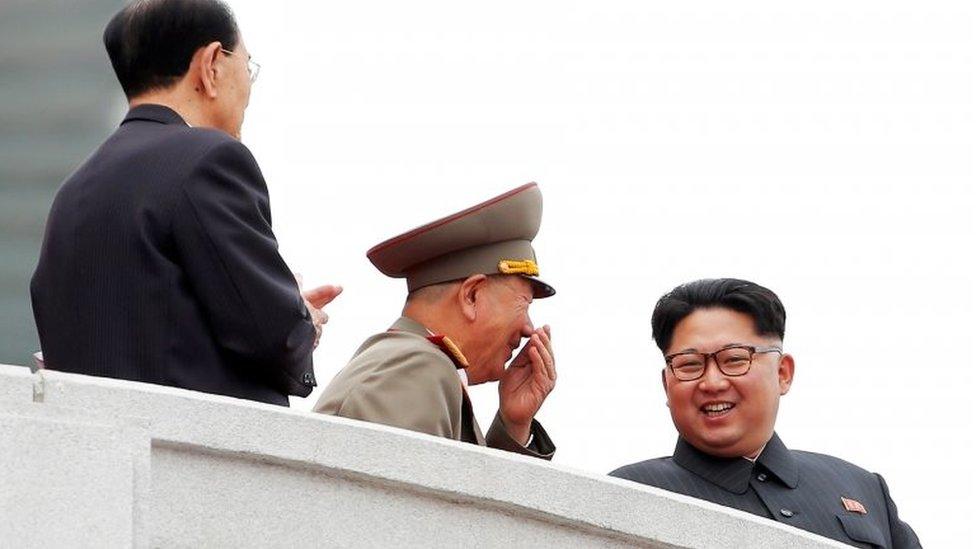
The pictures are important also because if a high ranking official turns up to work, you know who they were
The names might not mean a lot to the North Korean population, "but it does establish who the top people are in the regime. It's subtle message to people of who is in the know".
Some other notable names
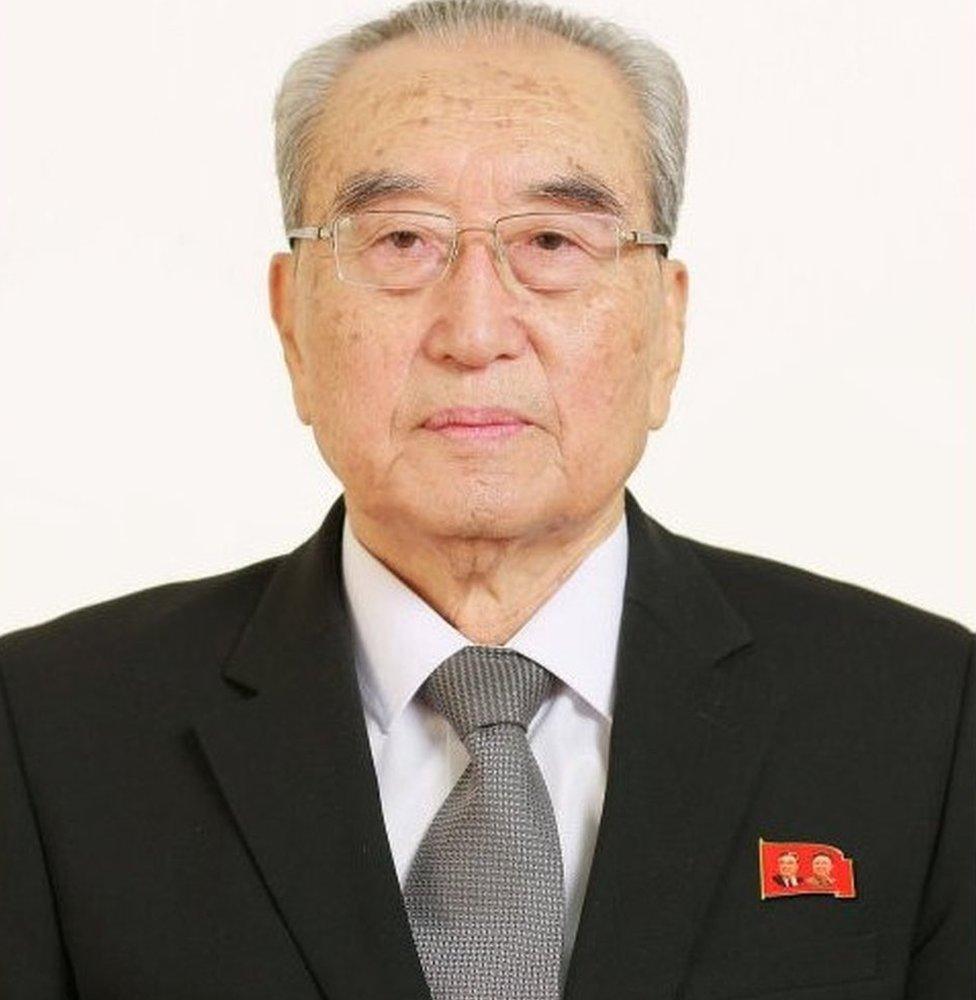
Kim Ki-nam, aged 87-88. From party secretary for propaganda and agitation to now a member of the political bureau
Kim Ki-nam, aged 87-88. He was party secretary for propaganda and agitation for some time and is now a member of the political bureau, vice-chairman of the party and department director.
Ri man-gon - a politbureau member, party vice-chairman and director of munitions and military, giving him personal oversight of North Korea's development of nuclear and conventional weapons.
Kim Yong-chol - he was appointed in January as head of national intelligence, following the death in a car accident of his predecessor, Kim Yang-gon.
- Published10 May 2016

- Published30 April 2016
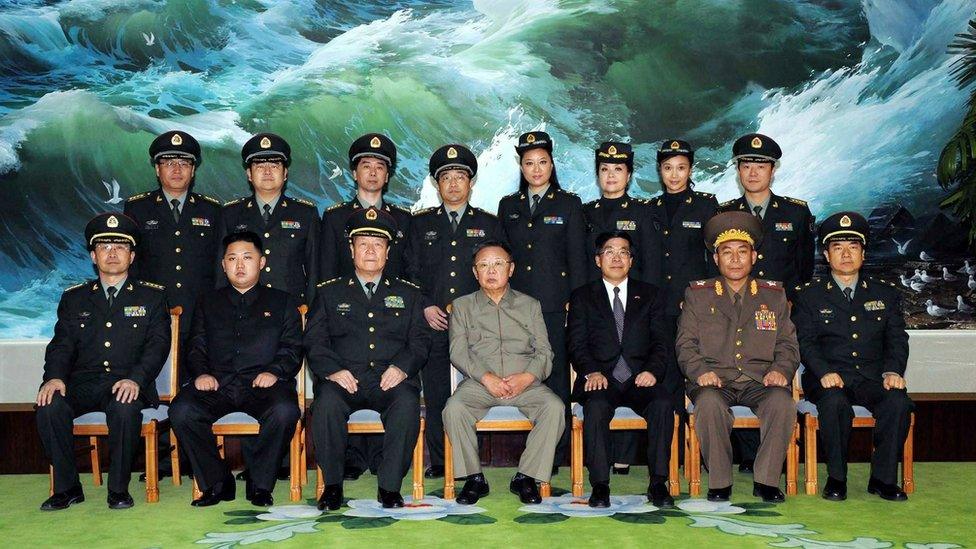
- Published10 May 2016
